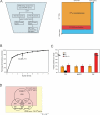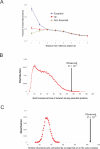High-quality binary protein interaction map of the yeast interactome network
- PMID: 18719252
- PMCID: PMC2746753
- DOI: 10.1126/science.1158684
High-quality binary protein interaction map of the yeast interactome network
Abstract
Current yeast interactome network maps contain several hundred molecular complexes with limited and somewhat controversial representation of direct binary interactions. We carried out a comparative quality assessment of current yeast interactome data sets, demonstrating that high-throughput yeast two-hybrid (Y2H) screening provides high-quality binary interaction information. Because a large fraction of the yeast binary interactome remains to be mapped, we developed an empirically controlled mapping framework to produce a "second-generation" high-quality, high-throughput Y2H data set covering approximately 20% of all yeast binary interactions. Both Y2H and affinity purification followed by mass spectrometry (AP/MS) data are of equally high quality but of a fundamentally different and complementary nature, resulting in networks with different topological and biological properties. Compared to co-complex interactome models, this binary map is enriched for transient signaling interactions and intercomplex connections with a highly significant clustering between essential proteins. Rather than correlating with essentiality, protein connectivity correlates with genetic pleiotropy.
Figures







Comment in
-
Biochemistry. Not comparable, but complementary.Science. 2008 Oct 3;322(5898):56-7. doi: 10.1126/science.1164801. Science. 2008. PMID: 18832636 No abstract available.
References
Publication types
MeSH terms
Substances
Grants and funding
LinkOut - more resources
Full Text Sources
Other Literature Sources
Molecular Biology Databases

